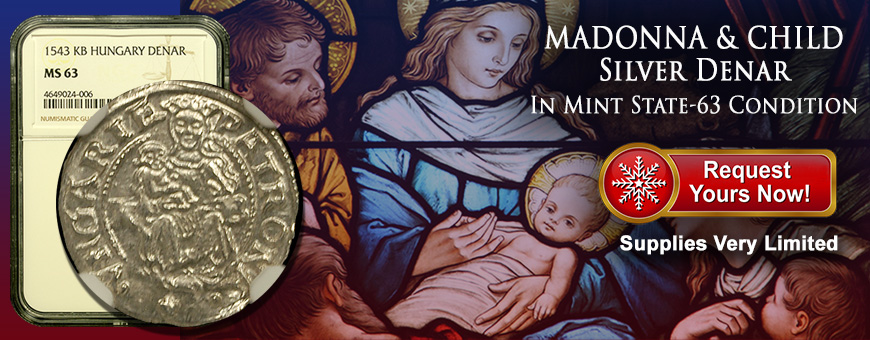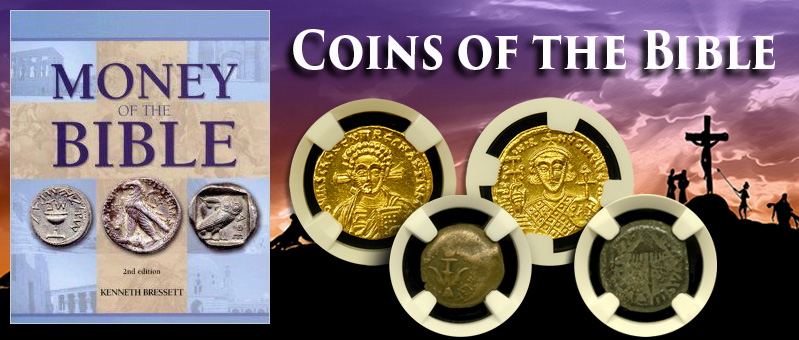
Historical Tapestry of Coins from the Bible
The ancient and medieval coins associated with the Bible carry within them not just the weight of currency but the echoes of historical epochs. As we delve into the numismatic treasured Coins of the Bible, we unravel a rich tapestry. Especially, of civilizations, empires, and religious shifts that have left an indelible mark on these tiny metallic artifacts.
I. Shaping the Cultural and Religious Landscape
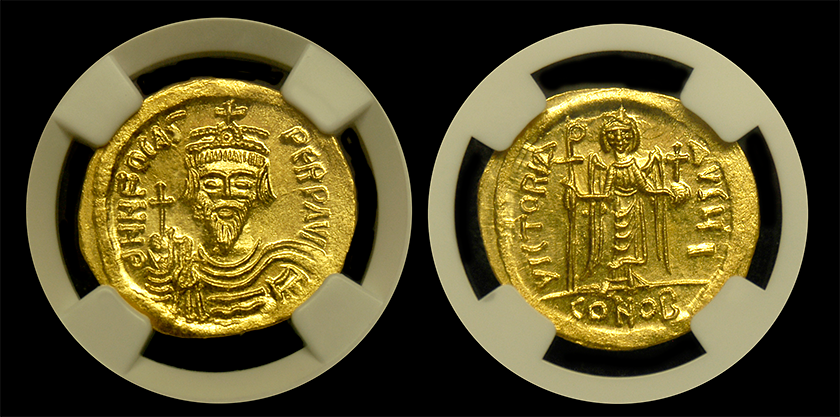
The Byzantine era, spanning from the 4th to the 15th century, was a crucible of cultural, religious, and political transformation. Coins from this period reflect the transitions from the Roman Empire to the Byzantine Empire and the subsequent spread of Christianity. The currency of this time, imprinted with the visages of emperors and Christian symbols, mirrors the dynamic interplay between the secular and the divine.
II. Coins as Historical Witnesses
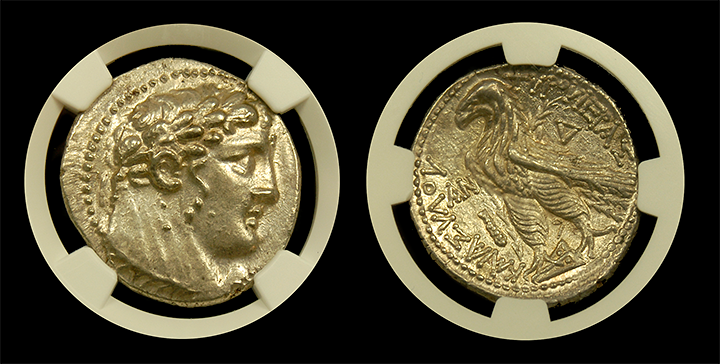
Beyond their denominational value, coins of the Bible serve as silent witnesses to historical events. For instance, the Tyrian shekel, mentioned in the New Testament, was the currency used in the Jerusalem Temple. This currency wasn't just a medium of exchange; it became emblematic of religious practices and political affiliations.
In Matthew 26:15-16, 27:3, and 27:5-6, the Bible recounts the pivotal event of Judas Iscariot's betrayal of Jesus for thirty pieces of silver, followed by his deep remorse and the casting aside of the ill-gotten coins. This narrative holds immense significance in Biblical history, prompting many to seek replicas of the described coins. Historical context suggests that these coins were likely shekels minted in Tyre, a prominent city in Phoenicia, and the sole producer of high-purity silver coins in the region during that era.
III. Coins as Instruments of Power and Propaganda
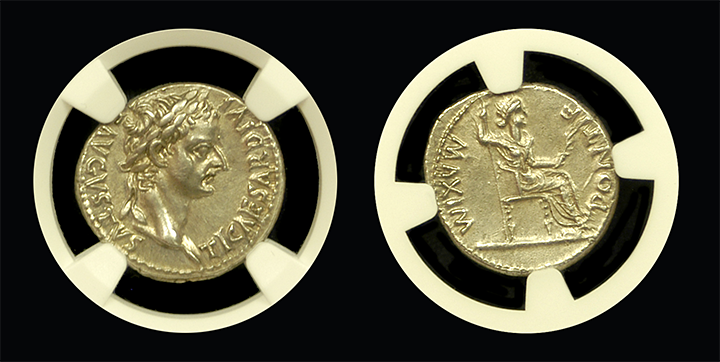
The coins minted during the Roman Empire's reign over biblical lands were not merely tools for transactions. They were instruments of power and propaganda, showcasing the faces of emperors, symbols of victory, and assertions of authority. The evolution of these coins corresponds with the shifts in the political landscape, from Julius Caesar to Constantine the Great.
Debates persist about the specific coin Jesus referred to. Certainly, it would need to feature an image of a Roman ruler along with an inscription naming that ruler. Within the realms of such discussions, numismatists have conventionally pointed to the standard silver denarius of Tiberius (A.D. 14-37) as a probable candidate. The Tribute Penny embodies the intersection of faith, history, and currency.
In a biblical episode echoing through the ages, the saying "Render unto Caesar the things that are Caesar's. Most importantly, unto God the things that are God's" (Matthew 22:21) remains etched in the minds familiar with the Bible's teachings. The significance of this pronouncement extends beyond theology to the realm of numismatics. Explicitly, Jesus utilized a Roman coin to delve into the question of the lawfulness of Jews paying taxes to the Romans.
IV. The Holy Land's Role in Numismatic History
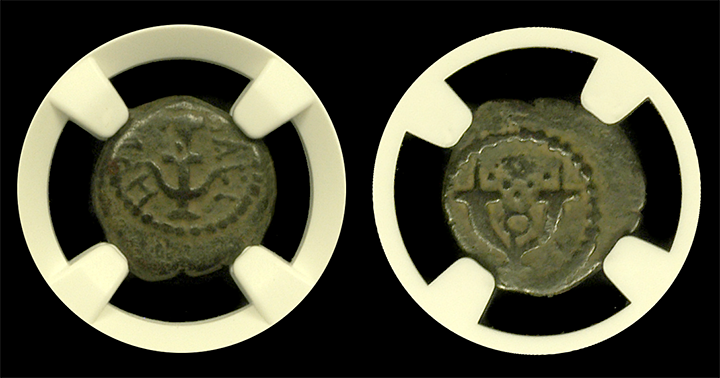
The Holy Land, being a crossroads of civilizations, witnessed the circulation of coins from various empires. Persian darics, Greek drachmas, and Roman denarii all found their way into the pockets of people living in this sacred land. This mingling of currencies reflected not just economic transactions but the intricate interweaving of diverse cultures.
Mark 12:41-44 and Luke 21:1-4 recount the poignant tale of a widow's selfless donation, a profound act of charity. Her two "mites," though meager, held more value than larger sums from wealthier contributors.
During this era in Judaea, a diverse range of small bronzes circulated. The donated "mites" could have been leptons or prutot of the Hasmonean kings, struck between 135 B.C. and 37 B.C. The most likely candidates, prutahs from King Alexander Jannaeus (103-76 B.C.), featured inscriptions in Greek and Hebrew, portraying an anchor on the obverse and a star on the reverse. Despite predating Jesus' ministry, their widespread circulation makes them the emblematic representation of the Widow's Mite.
V. Navigating Between Faith and Politics
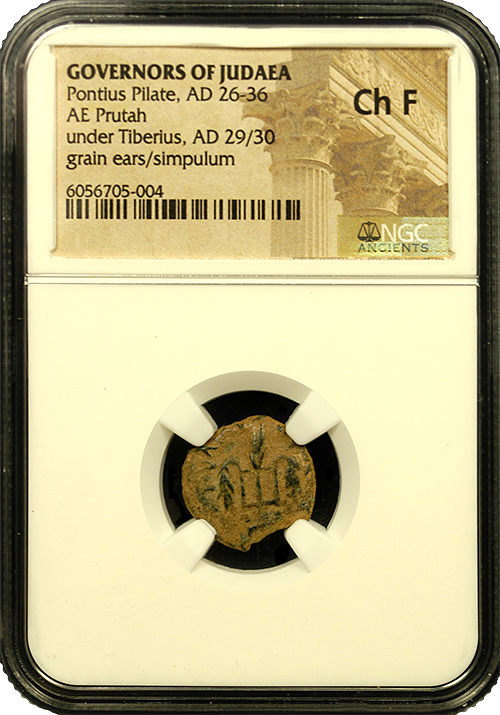
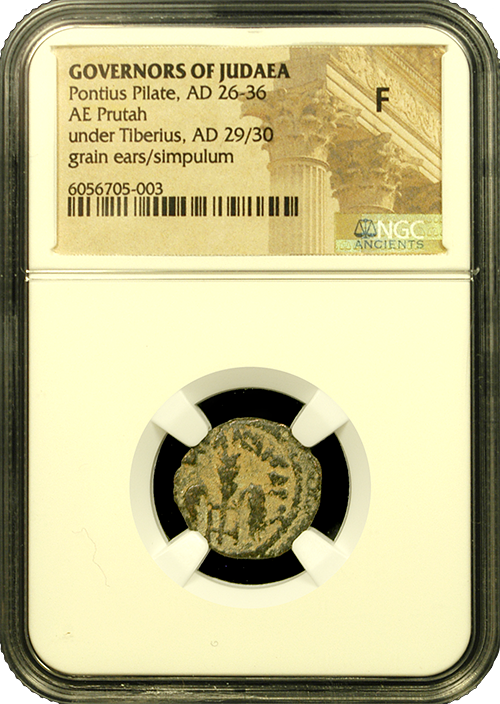 As related in John 18:33-35 and in Matthew 27:1-2, 27:22-26, and 27:57-58, Pontius Pilate, the Roman procurator of Judaea during the Ministry of Jesus, was a central figure in the arrest and trial of Jesus. Pilate is presented as being caught squarely between the remarkable acts of Jesus and the Jewish priestly hierarchy to take punitive action against him.
As related in John 18:33-35 and in Matthew 27:1-2, 27:22-26, and 27:57-58, Pontius Pilate, the Roman procurator of Judaea during the Ministry of Jesus, was a central figure in the arrest and trial of Jesus. Pilate is presented as being caught squarely between the remarkable acts of Jesus and the Jewish priestly hierarchy to take punitive action against him.
The small bronzes attributed to Pilate lack his name but bear dates confirming their association with Pilate. Marked with the Greek inscription TIBEPIOY KAICAPOC, signifying Tiberius as emperor. In fact, these coins indicate precise dates within Tiberius' 16th to 18th regnal years (A.D. 29 to 31). Pilate employed two designs, one featuring bound ears of barley and a simpulum on the obverse and a lituus on the reverse. The other design, more popular, displays a lituus on the obverse and the date enclosed within a wreath on the reverse.
VI. 1540 Hungarian Denar Madonna & Child
The year 1540 in Hungary was a tapestry woven with political intricacies, religious fervor, and cultural dynamism. Although it is not exactly a coin of the Bible, it does have a Christian narrative. Against the backdrop of the Habsburg dynasty's influence, these silver denars served as a reminder of a nation in flux. At the crossroads of faith and politics, Hungary grappled with diverse cultural influences. The coin's Fourfold coat of arms reflected the amalgamation of Hungarian, Polish, and Bohemian identities. The Hungarian Árpád stripes and double cross intertwined with the Dalmatian leopard heads and the Bohemian lion. Therefore, mirroring the geopolitical realities of Hungary as it navigated alliances and territorial dynamics.
However, the reverse of the coin unfolds a spiritual narrative. The Madonna, with her open crown, cradles the infant Jesus, embodying the enduring symbol of hope and protection. These coins, with the inscription "Patrona Ungarie," carried a dual role — not just as a medium of trade but as talismans invoking divine patronage over the people of Hungary, a source of strength in turbulent times. This was the same message of the Coins of the Bible in ancient times.
Conclusion: Coins as Time Capsules of Biblical History
Delving into Coins of the Bible unfolds more than currency evolution. In the glint of time-worn discs, we trace empires' rise and fall. These coins intricately weave religious narratives, civilizational crossroads, and silent whispers of centuries.
As we hold these numismatic artifacts, we grasp tangible links to epochs long gone. The cool touch of metal on our fingertips invites exploration of the very pulse of history. These coins are portals connecting us with hands that once exchanged them and civilizations that crafted stories in metal. The coins of the Bible, transcend time, inviting us to walk through the corridors of human history.
Discover more in "Money of the Bible: 2nd Edition" by Kenneth Bressett, available at Austin Rare Coins & Bullion. This unique journey into biblical times through a numismatist's eyes will deepen your faith and understanding. Undoubtedly, strengthening your belief in the stories, parables, and historical references from thousands of years ago.

